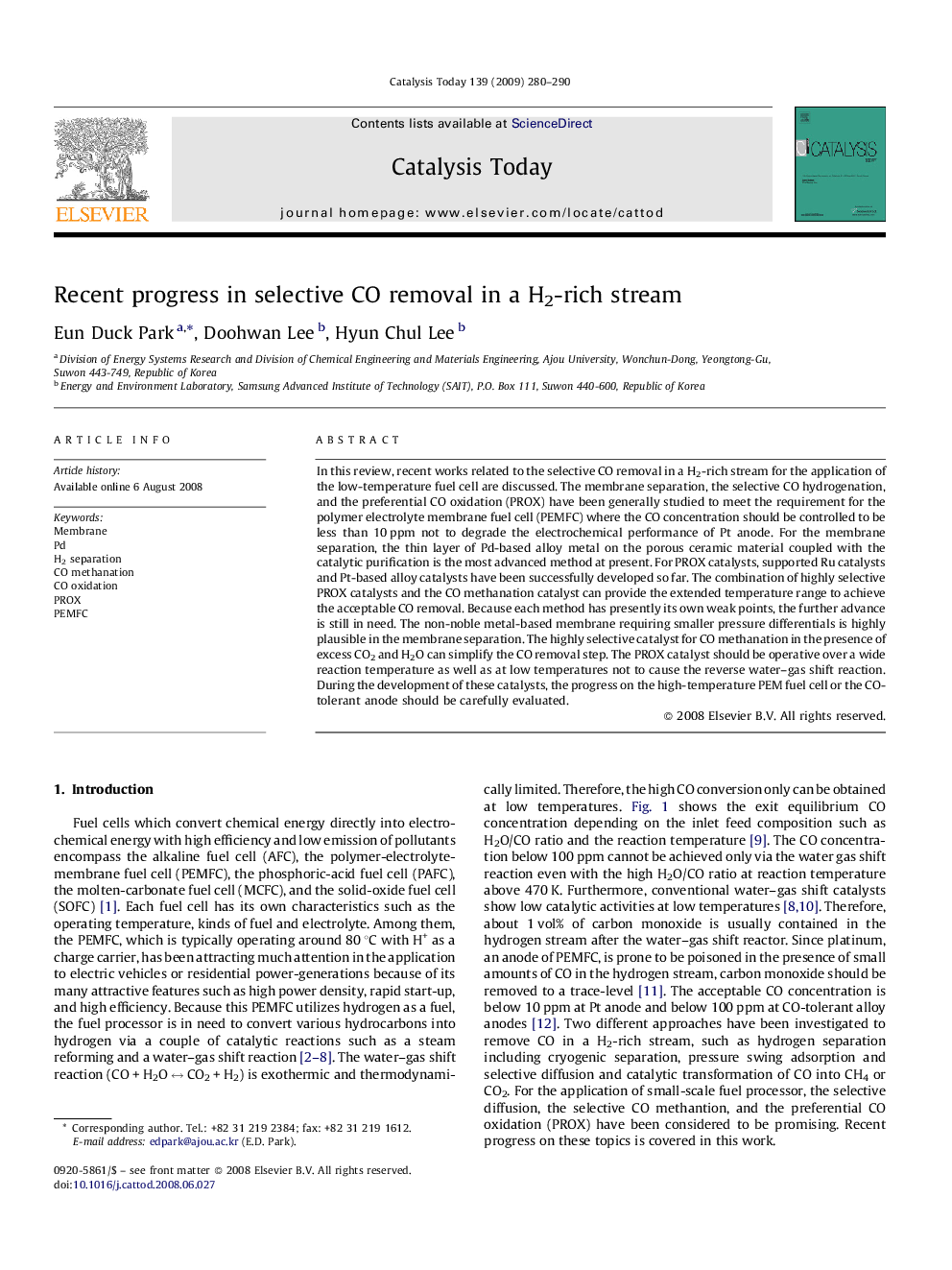| Article ID | Journal | Published Year | Pages | File Type |
|---|---|---|---|---|
| 57624 | Catalysis Today | 2009 | 11 Pages |
In this review, recent works related to the selective CO removal in a H2-rich stream for the application of the low-temperature fuel cell are discussed. The membrane separation, the selective CO hydrogenation, and the preferential CO oxidation (PROX) have been generally studied to meet the requirement for the polymer electrolyte membrane fuel cell (PEMFC) where the CO concentration should be controlled to be less than 10 ppm not to degrade the electrochemical performance of Pt anode. For the membrane separation, the thin layer of Pd-based alloy metal on the porous ceramic material coupled with the catalytic purification is the most advanced method at present. For PROX catalysts, supported Ru catalysts and Pt-based alloy catalysts have been successfully developed so far. The combination of highly selective PROX catalysts and the CO methanation catalyst can provide the extended temperature range to achieve the acceptable CO removal. Because each method has presently its own weak points, the further advance is still in need. The non-noble metal-based membrane requiring smaller pressure differentials is highly plausible in the membrane separation. The highly selective catalyst for CO methanation in the presence of excess CO2 and H2O can simplify the CO removal step. The PROX catalyst should be operative over a wide reaction temperature as well as at low temperatures not to cause the reverse water–gas shift reaction. During the development of these catalysts, the progress on the high-temperature PEM fuel cell or the CO-tolerant anode should be carefully evaluated.
